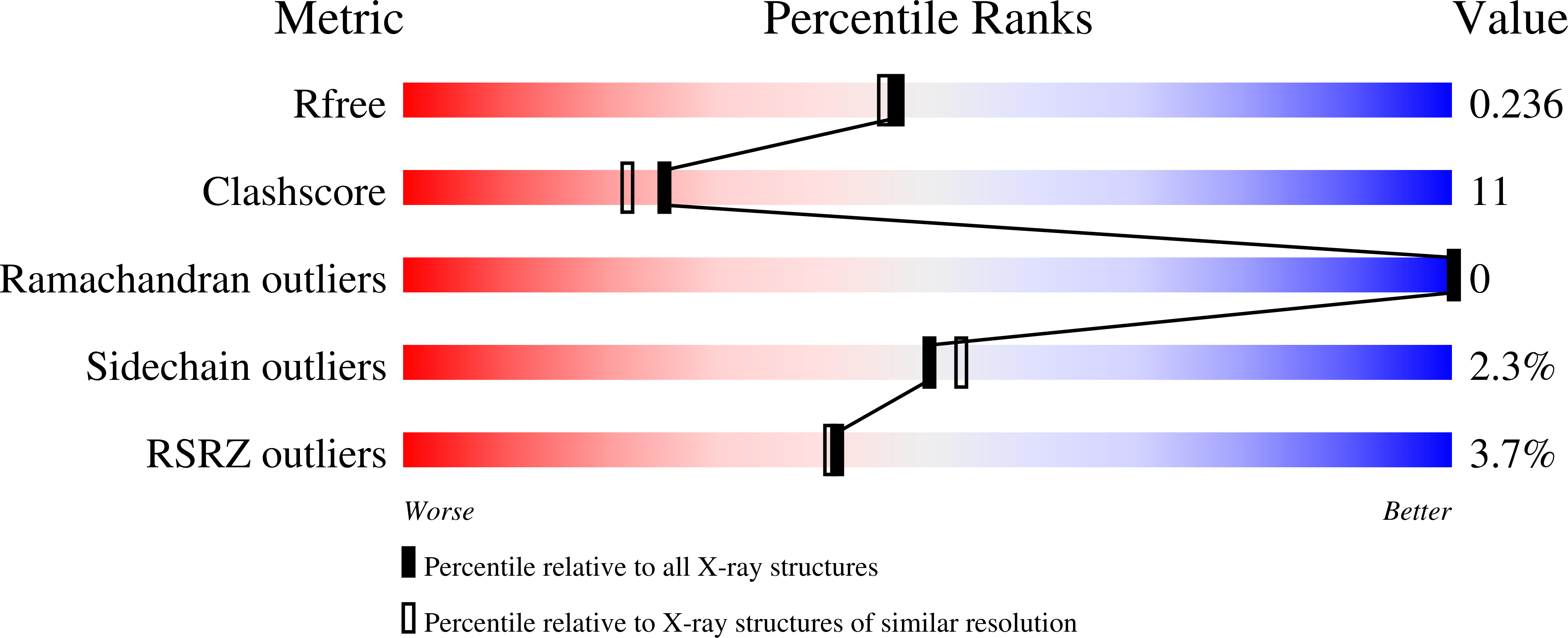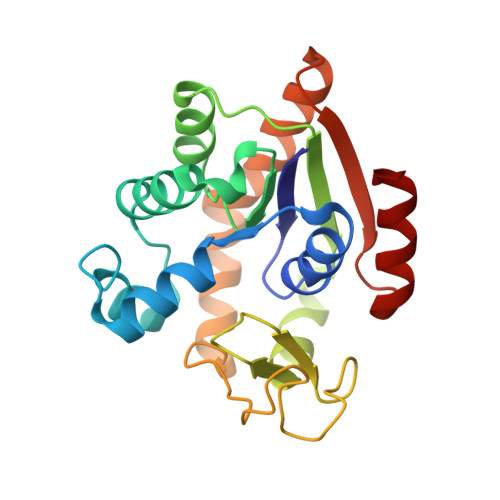Rational modulation of conformational fluctuations in adenylate kinase reveals a local unfolding mechanism for allostery and functional adaptation in proteins.
Schrank, T.P., Bolen, D.W., Hilser, V.J.(2009) Proc Natl Acad Sci U S A 106: 16984-16989
- PubMed: 19805185
- DOI: https://doi.org/10.1073/pnas.0906510106
- Primary Citation of Related Structures:
3HPQ, 3HPR - PubMed Abstract:
Elucidating the complex interplay between protein structure and dynamics is a prerequisite to an understanding of both function and adaptation in proteins. Unfortunately, it has been difficult to experimentally decouple these effects because it is challenging to rationally design mutations that will either affect the structure but not the dynamics, or that will affect the dynamics but not the structure. Here we adopt a mutation approach that is based on a thermal adaptation strategy observed in nature, and we use it to study the binding interaction of Escherichia coli adenylate kinase (AK). We rationally design several single-site, surface-exposed glycine mutations to selectively perturb the excited state conformational repertoire, leaving the ground-state X-ray crystallographic structure unaffected. The results not only demonstrate that the conformational ensemble of AK is significantly populated by a locally unfolded state that is depopulated upon binding, but also that the excited-state conformational ensemble can be manipulated through mutation, independent of perturbations of the ground-state structures. The implications of these results are twofold. First, they indicate that it is possible to rationally design dynamic allosteric mutations, which do not propagate through a pathway of structural distortions connecting the mutated and the functional sites. Secondly and equally as important, the results reveal a general strategy for thermal adaptation that allows enzymes to modulate binding affinity by controlling the amount of local unfolding in the native-state ensemble. These findings open new avenues for rational protein design and fundamentally illuminate the role of local unfolding in function and adaptation.
Organizational Affiliation:
Department of Biochemistry and Molecular Biology, and Sealy Center for Structural Biology and Molecular Biophysics, University of Texas Medical Branch, Galveston, TX 77555, USA.















